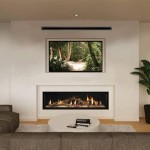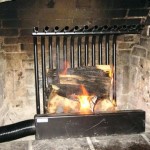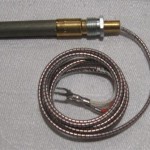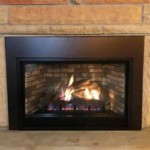Mobile Home Fireplace Insert: Safety, Efficiency, and Considerations
Mobile homes, also known as manufactured homes, often present unique challenges when it comes to heating options. While central heating systems are common, the desire for supplemental or alternative heating, often in the form of a fireplace, remains strong for many homeowners. Installing a fireplace insert in a mobile home requires careful consideration due to space constraints, safety regulations, and the specific construction characteristics inherent in these dwellings. This discussion will explore the key aspects of mobile home fireplace inserts, focusing on safety considerations, efficiency, installation requirements, and the types of inserts suitable for these environments.
The term "fireplace insert" refers to a self-contained heating appliance designed to be installed within an existing fireplace opening. This differs from a traditional fireplace, which is an open hearth built into the structure of the home. Inserts offer several advantages over traditional fireplaces, including improved heating efficiency, reduced air pollution, and enhanced safety features. However, the application of these advantages in a mobile home environment necessitates a granular understanding of the specific needs and constraints of such dwellings.
Understanding Mobile Home Construction and Regulations
Mobile homes are constructed differently from traditional site-built homes. They are built in a factory setting and transported to their final location. This modular construction influences the types of heating systems that can be safely and effectively installed. One critical factor is the use of lightweight materials in mobile home construction. These materials, while cost-effective and amenable to factory assembly, can pose increased fire risks if not properly protected from high temperatures. Therefore, any heating appliance installed in a mobile home must be specifically designed and certified for such use.
The Department of Housing and Urban Development (HUD) sets federal standards for the construction and safety of mobile homes. These standards, often referred to as the HUD Code, address various aspects of mobile home design and construction, including heating systems. The HUD Code outlines specific requirements for the installation of solid-fuel burning appliances, such as wood-burning stoves and fireplace inserts. These requirements are designed to minimize the risk of fire and ensure the safety of occupants.
Local building codes also play a significant role in regulating the installation of fireplace inserts in mobile homes. These codes may supplement or modify the HUD Code requirements, depending on the specific jurisdiction. It is imperative for homeowners to consult with their local building department to determine the applicable codes and obtain the necessary permits before installing a fireplace insert.
One of the primary challenges in installing a fireplace insert in a mobile home is ensuring proper ventilation. Mobile homes are often more tightly sealed than site-built homes, which can lead to a buildup of carbon monoxide and other harmful gases if combustion appliances are not properly vented. The HUD Code and local building codes typically require the installation of a dedicated chimney or vent system for solid-fuel burning appliances. This system must be designed to safely exhaust combustion gases to the outside atmosphere.
Furthermore, clearance requirements are particularly stringent in mobile homes due to the limited space and the use of combustible materials. Fireplace inserts must be installed with adequate clearance from walls, ceilings, and other nearby objects to prevent overheating and reduce the risk of fire. The manufacturer's installation instructions typically specify the minimum clearance requirements for the particular model of insert.
Choosing the Right Type of Fireplace Insert
Several types of fireplace inserts are available, each with its own advantages and disadvantages for use in a mobile home. The most common types include wood-burning inserts, gas inserts, and electric inserts. The suitability of each type depends on factors such as fuel availability, cost, and homeowner preferences. However, safety and compliance with regulations are paramount in the selection process.
Wood-burning inserts offer the appeal of a traditional fireplace experience and can provide significant heating capacity. However, they require a readily available source of firewood and involve more maintenance than other types of inserts. Wood-burning inserts also generate more particulate emissions, which can contribute to air pollution. Due to the strict emission standards and safety concerns, wood-burning inserts certified for mobile home use are becoming increasingly rare. Those that are available must meet stringent EPA (Environmental Protection Agency) standards and be specifically listed for mobile home installation. Proper installation, including a dedicated chimney and adequate clearances, is crucial for safe operation.
Gas inserts offer a convenient and relatively clean-burning alternative to wood-burning inserts. They can be fueled by natural gas or propane, and they typically feature automatic ignition systems and adjustable heat output. Gas inserts produce fewer particulate emissions than wood-burning inserts, and they require less maintenance. However, they require a gas line connection, which may necessitate professional installation. Gas inserts designed for mobile homes must be certified to meet ANSI (American National Standards Institute) standards and must be installed in accordance with the manufacturer's instructions and local building codes.
Electric inserts are the simplest type of fireplace insert to install, as they do not require a chimney or vent system. They operate on electricity and produce heat through resistance coils. Electric inserts are typically less expensive than wood-burning or gas inserts, and they offer the convenience of instant on/off operation. However, they typically have lower heating capacity and can be more expensive to operate than gas or wood-burning inserts, especially during prolonged use. Electric inserts are generally considered the safest option for mobile homes, as they do not produce any combustion gases. However, it's essential to ensure that the electrical system in the mobile home is capable of handling the additional load imposed by the insert.
Installation and Safety Precautions
Proper installation is critical for the safe and efficient operation of a fireplace insert in a mobile home. It is strongly recommended to hire a qualified and experienced installer to ensure that the installation is performed in accordance with all applicable codes and regulations. A certified professional will be familiar with the specific requirements for mobile home installations and will have the necessary skills and equipment to perform the job correctly.
Before beginning the installation process, it is essential to obtain the necessary permits from the local building department. The permit process typically involves submitting plans and specifications for the proposed installation and undergoing inspections to ensure compliance with building codes. Failure to obtain the required permits can result in fines and delays, and it can also compromise the safety of the installation.
The installation process typically involves the following steps:
- Preparing the Fireplace Opening: The existing fireplace opening must be cleaned and inspected to ensure that it is structurally sound and free of any combustible materials. Any necessary repairs or modifications must be made before proceeding with the installation.
- Installing the Chimney or Vent System: For wood-burning and gas inserts, a dedicated chimney or vent system must be installed to safely exhaust combustion gases. The chimney or vent system must be sized and installed in accordance with the manufacturer's instructions and applicable codes.
- Positioning the Insert: The fireplace insert must be carefully positioned within the fireplace opening, ensuring that it is level and properly aligned. Adequate clearance must be maintained between the insert and any nearby combustible materials.
- Connecting the Fuel Supply (Gas Inserts): For gas inserts, a gas line must be connected to the insert in accordance with the manufacturer's instructions and local gas codes. A licensed gas fitter should perform this connection to ensure safety.
- Connecting the Electrical Supply (Electric Inserts): For electric inserts, the insert must be connected to a dedicated electrical circuit that is capable of handling the load. A qualified electrician should perform this connection to ensure safety.
- Testing and Inspection: After the installation is complete, the fireplace insert must be tested to ensure that it is operating properly and safely. The installer should also inspect the installation to verify compliance with all applicable codes and regulations.
In addition to proper installation, regular maintenance is essential for ensuring the safe and efficient operation of a fireplace insert. The chimney or vent system should be inspected and cleaned annually to remove any creosote or other debris that may have accumulated. The insert itself should be cleaned and inspected regularly, and any necessary repairs should be made promptly. Homeowners should also install and maintain working carbon monoxide detectors in their mobile homes to provide early warning of any potential carbon monoxide leaks.
Furthermore, consider the added weight of the insert and chimney system. Mobile homes are often designed with lighter framing and subflooring compared to traditional homes. It's crucial to ensure that the structure can adequately support the weight. This may involve reinforcing the floor beneath the fireplace opening to prevent sagging or structural damage.
Finally, ensure proper insulation around the fireplace insert. This will not only improve the efficiency of the heating but also help prevent heat transfer to nearby combustible materials. Use non-combustible insulation materials specifically designed for use around fireplaces and stoves.
By understanding the unique challenges and requirements of mobile home heating, adhering to safety regulations, and selecting the appropriate type of fireplace insert, homeowners can enjoy the warmth and ambiance of a fireplace while ensuring the safety and comfort of their homes.

All About Prefabricated Fireplaces Chimney Savers

Maintaining Prefabricated Home Fireplaces Clayton Studio

Time To Replace Wood Burning Prefab Fireplace Greenville Sc Blue Sky

The Best Wood Burning Fireplace Inserts Of 2024 Picks From Bob Vila

Modern Gas Fireplace Insert Contemporary Detroit By Federal Bbq Co Houzz

Best Fireplace Inserts Of January 2024 Forbes Home

100 Mobile Home Stoves Ideas Wood Stove

Ventis Hei240 Fireplace Insert With Blower

Maintaining Prefabricated Home Fireplaces Clayton Studio

Zero Clearance Vs Prefabricated Fireplace Full Service Chimney
Related Posts








